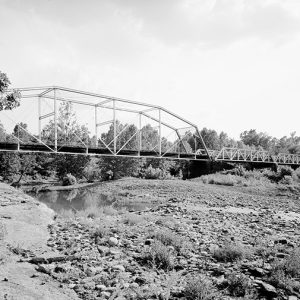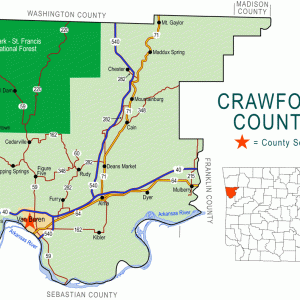calsfoundation@cals.org
Chester (Crawford County)
| Latitude and Longitude: | 35°40’51″N 094°10’31″W |
| Elevation: | 840 feet |
| Area: | 0.51 square miles (2020 Census) |
| Population: | 144 (2020 Census) |
| Incorporation Date: | February 11, 1889 |
Historical Population as per the U.S. Census:
|
1810 |
1820 |
1830 |
1840 |
1850 |
1860 |
1870 |
1880 |
1890 |
1900 |
|
– |
– |
– |
– |
– |
– |
– |
– |
222 |
174 |
|
1910 |
1920 |
1930 |
1940 |
1950 |
1960 |
1970 |
1980 |
1990 |
2000 |
|
162 |
223 |
196 |
207 |
120 |
99 |
82 |
139 |
125 |
99 |
|
2010 |
2020 |
|
|
|
|
|
|
|
|
|
159 |
144 |
|
|
|
|
|
|
|
|
Surrounded by some of the higher peaks of the Ozark Mountains and by the Ozark National Forest, Chester is a town in northern Crawford County. Chester, once a timber town on the St. Louis–San Francisco Railway, later became a local tourist attraction. Interstate 49 passes near the town.
Osage once traveled south to hunt and fish in northern Arkansas. The Ozark Mountains remained sparsely populated even after Arkansas became a state. The first settlers to own land at the future site of Chester were Solomon Rush and James Wright, both of whom purchased land grants from the federal government in 1854. However, a log cabin school had already been built in the area ten years earlier. Rush and Wright were joined a few years later by the Rankin and Furlow families. During the Civil War, bushwhackers terrorized the farm families and stole their property until they were eventually driven away by Federal troops.
After the war, the railroad industry began to become prominent in Arkansas. The St. Louis–San Francisco Railway (commonly called the Frisco) built a line from the north as far as the emerging location of Chester in 1882. A post office was established at the depot in 1883, but it is not known why the name Chester was chosen. According to Clara B. Eno, the community was named by a railroad engineer known only as Mr. Hepburn. A roundhouse and turntable were built by the railroad in 1887, and the community rapidly became a thriving timber town. Chester was incorporated in 1889.
Wright built a grocery store, which then housed the post office, and also constructed a blacksmith shop and a barber shop. In March 1887, Wright surveyed and platted nine blocks for the growing village. George Mooney opened a second store, and a drugstore, a boarding house, and a sawmill were also built. Jacob (Jake) Yoes and his sons also opened a hotel and store, built from hand-kilned bricks. A Masonic lodge, a Methodist church, and a public school were also established in the young town, the schoolhouse being built in 1895.
Chester thrived during the last decade of the nineteenth century. Around 1900, however, the Frisco railroad was completed to Fort Smith (Sebastian County), and the railroad businesses were relocated to the larger city. Afterward, Chester suffered a series of disasters. Nearly the entire town was destroyed by fire in 1908, and a second fire in 1936 destroyed twelve buildings, including the Methodist church. The town was flooded in 1934. A levee was built along Howard’s Fork, but the levee gave way under high water in May 1957, and the town was rapidly flooded.
The school was consolidated into the Mountainburg (Crawford County) school system in 1946. By 1968, Chester was largely a bedroom community of Fort Smith. The brick store built by Jake Yoes was still in operation under the management of Vesta Furlow. Consolidation had closed the school, and a Freewill Baptist church began using the abandoned school building.
Chester has three buildings on the National Register of Historic Places. One is the Masonic lodge and community building, built in 1942 using some pieces of a previous building. Another is the Jacob Yoes store, the only structure in Chester to survive both fires and both floods. The third is the schoolhouse, refurbished in the 1980s, forty years after the school had closed.
For additional information:
Allen, Eric. “Chester, Quaint Town in the Ozarks.” The Heritage 11 (April 1968): 29–32.
Hopkins, Eula, and Wanda M. Gray. History of Crawford County, Arkansas. Van Buren: Historical Preservation Association of Crawford County, Arkansas, 2001.
Rastall, W. R. “The Furlow Family of Chester. The Heritage 7 (October 1963): 16–21.
Steven Teske
Butler Center for Arkansas Studies
 Chester Bridge
Chester Bridge  Chester Storefront
Chester Storefront  Crawford County Map
Crawford County Map 




Comments
No comments on this entry yet.